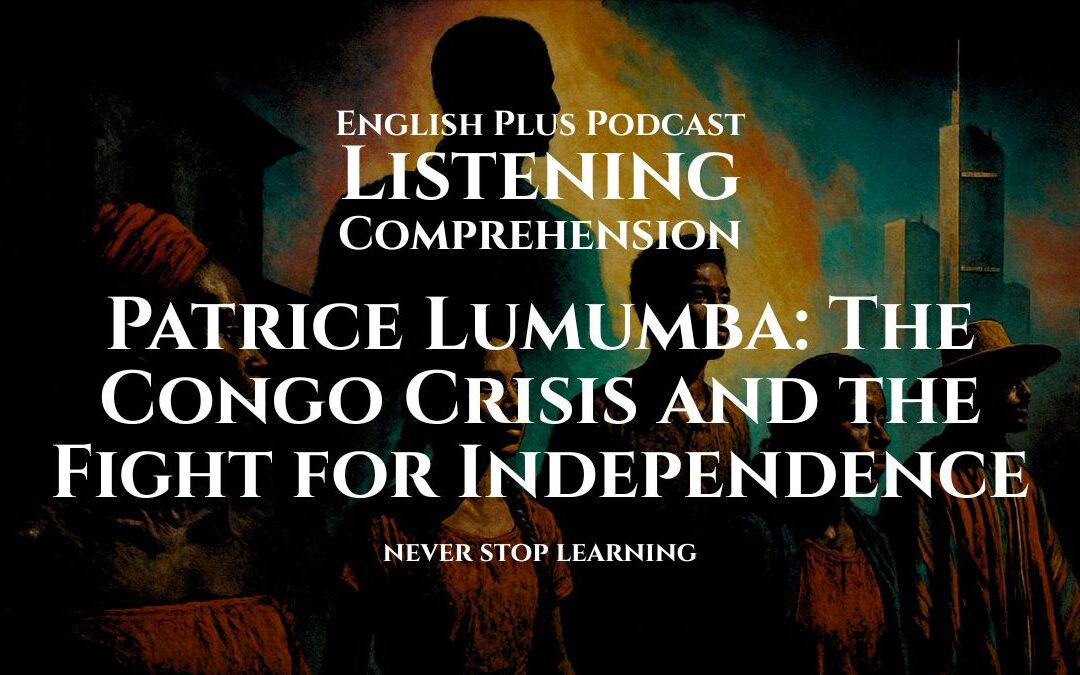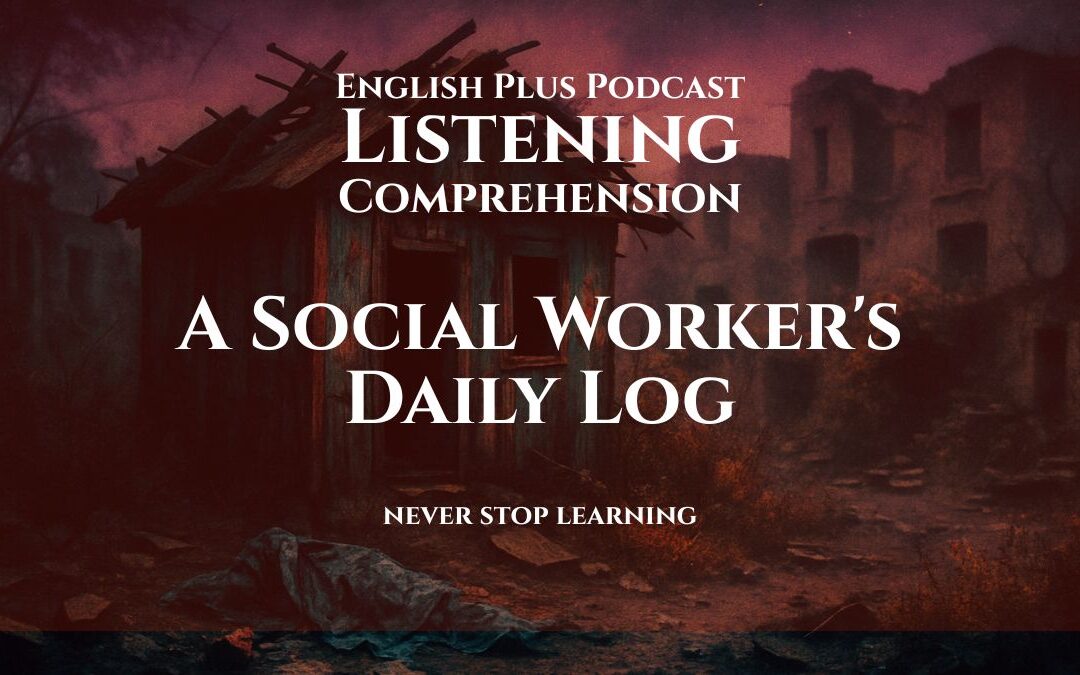Transcript
Disclaimer
I am using an automatic transcript service as it is not possible for me to do it on my own and I cannot afford human transcription at the moment. The service claims to have about 95% accuracy, which means there will still be some mistakes, so my apologies for having a less than perfect transcript, but I hope I can afford human transcription soon and I will solve this problem. However, the service is pretty good, and the transcript is almost perfect.
Transcript
Welcome to a new episode from English plus podcast. Today, it’s all about business English and we will talk about team building. We will talk about teams, some frequent combinations with the word team, team players, and the stages of team life. So without further ado, let’s start talking about team building in a new business English episode from English plus podcast.
[00:00:30] Now let’s first talk about teams now in some, but not all situations, tasks can be achieved more easily by teams with a common purpose rather than by individuals. Of course, it’s important to develop teamwork through team building. So as to get the best from the team, The level of engagement and commitment is the degree to which team members feel involved with a team.
[00:00:55] Now let’s talk about some frequent combinations with a word team. We have words like team leader, team effort, team performance, team dynamics, team effectiveness, and team learning. What does that mean? Or what do these combinations mean? Let’s start with a team leader. Now the team leader is obviously the person in charge of the team.
[00:01:17] So for every team, we usually have a team leader. We also say team effort, and that is the work done together by the team. There’s also the team performance, the results that the team produces. Whether they have good performance or bad performance. And then there is the team dynamics, the way the team works together.
[00:01:38] And as I said earlier, in some situations, not all situations, tasks can be achieved more easily by teams with a common purpose rather than by individuals. So that means you have to assess the team effectiveness. The degree to which the team produces results because sometimes maybe the work can be done better by individuals maybe.
[00:02:00] And some other times maybe the team is not cohesive enough, or maybe there is something that you need to do to work on the team effectiveness, to improve the team effectiveness. And then there is the team learning when people learn in teams rather than individually. Now that proves to be a very effective learning technique when people learn together.
[00:02:23] Now it might not work for all people. I know that some people prefer to learn on their own, but in general team learning proves to be more effective than individual learning. Specially we’re talking about in companies. Because while they’re learning things together, they kind of bond and the team grows stronger.
[00:02:42] Now we will talk about team players in the book management teams, why they succeed or fail Meredith Belbin identifies different types of team members or team players. Now we will talk about these different types. We have the implementer, the coordinator, the shaper, the plant, the resource investigator, the monitor evaluator, the team worker, and the completer.
[00:03:07] So let’s start with the very first one. What does that mean? Who are these team players? Now, by the way before we talk about those team players, let’s make it clear that not all teams have all these team players, but when we talk about big teams, we usually have all these team players within the same team.
[00:03:26] But in some other smaller teams, you might have one or two team players of the kinds we’re going to talk about within a team. Sometimes one kind is more important than another kind for sure team, et cetera. But for us, let’s learn these types of team members or team players. Let’s start with the implementer.
[00:03:44] Now the implementer converts the team’s plan into something achievable. Another type of team players is the coordinator. The coordinator is a confident member who sets objectives and define steam members’ roles. Or we have the shaper, the shaper defines issues, shapes ideas, and leads. The action. Or we have the plant.
[00:04:08] The plant is a creative and imaginative person who supplies, original ideas and solves problems. Or we can have the resource investigator, the resource investigator communicates with the outside world and explores opportunities. And we have the monitor evaluator. The monitor evaluator sees all the possibilities, evaluate situations objectively and sees what is realistically achievable.
[00:04:36] And then we have the team worker, the team worker builds the team, supports others and reduces conflict. And finally we have the completer, the completer meets deadlines, correct mistakes, and make sure nothing is forgotten. So again, we have the implementer, the coordinator, the shaper, the plant, the resource investigator, the monitor evaluator.
[00:05:00] The team worker and the completer. Now, as we said, maybe you don’t have all these team players within the same team, or maybe just one member of the team can be more than one type. And that is usually the case. We usually have people who are the implementer, the coordinator, and the monitor evaluator at the same time.
[00:05:19] Or the team worker and the completer, the shaper at the same time, it doesn’t have to be that you are just one of these types or a person, an employee is just one of these types. Maybe you can describe a person mainly as the coordinator, the resource investigator, et cetera, but people can be more than one type.
[00:05:39] But when you think about the types of team members that helps you build teams, when you want to build a team, you don’t want to build a team of implementers with no coordinators, no shapers, no plants, et cetera. You want to build a team that has all these or almost all these types. And that is the job of managers.
[00:06:00] When the managers put a team together, they have to think not only of their technical skills, but they have to think as well of these types. Because when you put a team that has all these types in it, most probably it’s going to be an effective team. And again, let me remind you that this is taken from management teams, why they succeed or fail by Meredith Belbin.
[00:06:21] So if you want to learn more about it, you can read the book if you like, but this is in a nutshell, the types of team members or team players. And now finally, let’s talk about the stages of team life. But before we do that, let me remind you that you can find a transcript of this episode on our website, English plus podcast.com.
[00:06:40] And on the website, you will find a lot of other posts that have interactive activities, PDF, downloadable, worksheets, and a lot of things that will take your learning to the next level. And also for those who are interested in our premium episodes and premium content, soon, I’m going to add courses and premium forums for our book club and other activities.
[00:07:01] So, so if you are interested, you can become a patron on Patreon and unlock all this premium content. And now let’s go back and talk about the final point for today’s episode, and that is the stages of team life. Now, the typical team goes through a series of stages. The first stage is forming. Then storming, then norming, performing, and finally mourning.
[00:07:26] Now you might find that this is kind of silly, you know, forming norming, storming, et cetera. But these things in business, especially in business, they use this kind of thing. They use those kinds of names maybe because they sound well or they sound smart sometimes, but this is not all. This is easy to remember.
[00:07:43] That’s why we use a lot of acronyms and abbreviations and things like that. Forming, storming, norming, performing and mourning. So here, please don’t find this silly. It is very important to remember. It’s easy to remember this stuff, so let’s get back to it. The first stage is forming. The group is anxious and feels dependent on a leader.
[00:08:04] The group tries to discover how it is going to operate and what the normal ways of working will be. That is the forming stage of a team life at this stage, not everything is clear and they’re kind of depending on the team leader to tell them how things are going to work. Now the team leader can be the manager, but preferably a person from the team who is assigned to be the team leader better than just a distant manager who just gives them orders or things to do or tasks or whatever.
[00:08:34] But anyway, this is the stage where we call it the team forming the stage of forming the team. Now, the next stage is storming. The atmosphere may be one of conflict between members who may resist control from any one person. There may be the feeling that the task cannot be achieved. Now, this is a critical stage and, and if things are not figured out and problems are solved at this stage, there are no more stages usually, or the team is doomed to fail.
[00:09:03] Then we have the norming stage. Now at this stage members of the group feel closer together and the conflicts are forgotten. Members of the group will start to support each other. There is increasingly the feeling that it is possible to achieve the task. Now here, it is important to have a good team leader that can lead the team from the forming stage and can survive the storming stage to get to the norming stage because the good stuff happens after the norming stage, after they bond, after they start to feel that they belong together, that they can support each other, that they can depend on each other.
[00:09:39] They can trust each other. We get the performing stage. The group is carrying out the task for which it was formed. Members feel safe enough to express differences of opinion in relation to others. And at this stage they just perform. They just give you results. Now, one of the common mistakes that you can find in companies all around the world, that they form a team and they expect the team to be at the performing stage immediately from day one.
[00:10:08] Usually that doesn’t happen, especially if you are bringing different people and it is important to bring different people, because remember we talked about the different types of team players that you need to have in a team. So the common mistake is that you bring a team together and you expect the steam to be at the performing stage already.
[00:10:29] That doesn’t work, especially for a new team. Maybe if you’re talking about a team that has been together for a long time, of course, they’re already there. They already know each other. They’ve already done many tasks together, or they’ve already achieved a lot. They finished many projects, et cetera. So maybe they are already at the performing stage.
[00:10:47] But when you form a team, it is very important to know that you have the forming storming and norming before the performing stage. And to achieve a good result from your team. You have to understand how to move from one stage to the next of course, we can go on and on and talk a lot about how to do that.
[00:11:09] And we have a lot of details and maybe I will do that in another episode. But for today, it is important for us to understand the stages of team life so that you know where at least you can decide what stage is the team at now, so that I can take it to the next stage. And that helps you manage expectations from the team and then assess the team’s performance because you cannot assess the team’s performance at an early stage, or at least you can not expect a lot because there’s still a lot of differences.
[00:11:39] There’s a lot of conflict. It is not yet a cohesive team. It is not yet a good team and effective team. So that being said, that leaves us with the last stage the morning. The group’s work is finished and its members begin to have pleasant memories of their activities and achievements. Now that happens specially in the case, when the team’s work is done and they are no longer together or maybe the project is done and they have those pleasant memories of their activities and achievements together, maybe they have other projects in the future and it’s preferably.
[00:12:12] To use teams like that, that have proven their worth, but it is also useful to add new team players, to teams, especially for new members in the company that you want to infuse in the culture of the company. It might be a good idea to add them strategically to good teams where they can of course add value.
[00:12:32] Not only learn, they can also add value, but they can also learn from effective teams. Another common mistake is to form a team completely from new members. Of course, unless if you starting out that’s will be the case, but if you already have teams bring the new members into all teams, but do that strategically because you don’t want them to feel left out.
[00:12:53] You want them to feel that they belong? You want to nurture this culture in the company that any person, no matter how long they’ve been in a team is a part of the team is an essential part of the team. But also when you think strategically, when you choose strategically different players, remember the different types of team members you can use that you don’t want to add too many resource investigators inside one team, too many shapers in one team, too many plants in one team, you get the picture.
[00:13:22] But did that being said now I really think we should talk more about that because there’s a lot more to be said about this, but that is all for today. I hope you learned something interesting about team building. And of course, I hope you enjoyed the episode. Once again, let me remind you that you can find a lot more on our website, English plus podcast.com.
[00:13:39] The link is in the description. Take the link and take your learning with it to the next level. And don’t forget that you can become a patron on Patreon and unlock all our premium content that you can find on the website. With that being said, this is your host, Danny. I would like to thank you very much for listening to another episode from English plus podcast.
[00:13:57] See you next time.











0 Comments